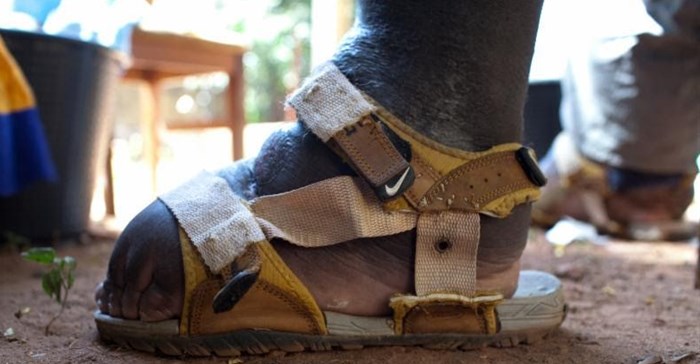New drug regimen to treat lymphatic filariasis

With a reduced time frame for treatment, the burden of LF on the population receiving IDA treatment would be alleviated and the time and resources of trained health workers freed up to focus on other public health issues. This will undoubtedly support efforts to achieve universal health coverage in Kenya, and offer guidance to other countries eligible for IDA treatment.
Neglected tropical disease
Current treatment regimens for LF, a neglected tropical disease (NTD) - more commonly known by its most visible symptom, elephantiasis - include mass drug administration of a dual therapy consisting of diethylcarbamazine (DEC) and albendazole (ALB). The new IDA treatment adds the delivery of ivermectin (IVM) to form a triple therapy that studies have shown to deliver a shorter, more cost-effective programme. This is a game-changing opportunity to accelerate progress towards the elimination of LF as a public health problem in Kenya, and help the East African nation join the 14 countries that have already done so.
Globally, 856-million people are at risk of LF - almost half of whom live in Africa - with 3.9-million of those in Kenya. The Ministry of Health has selected three areas to rollout the pilot treatment and will use the 2018 results to inform scale up to the rest of the country in 2019. Five other African countries are eligible for the new regimen: Sao Tome and Principe with 188,000 people at risk of LF, Comoros with 405,000 at risk, Madagascar with 19.6 million at risk, Eritrea with 17,000 at risk, Zambia with 11.3 million at risk and Zimbabwe with 7.8 million at risk. Other countries considering IDA rollout in 2019 include India, with over 400 million people at risk of LF.
As one of the most common causes of long-term and permanent disability globally, LF is a threat to communities beyond health implications. It causes ,bsignificant social stigma and deprives those suffering from the disease the dignity and opportunities that underpin a productive life. .social stigma
The highly visible symptoms - including extreme swelling of limbs, breasts and external genitalia - also encourage a high degree of social exclusion and leave those with LF often unable to perform daily tasks such as attending school or work, or taking care of their basic hygiene and health needs, putting them at a higher risk of long-term poverty.
Recognising the severity of LF's socioeconomic impact, the NTD community and global health partners, like the World Health Organisation (WHO), are especially hopeful about taking this next step towards eliminating the disease.























